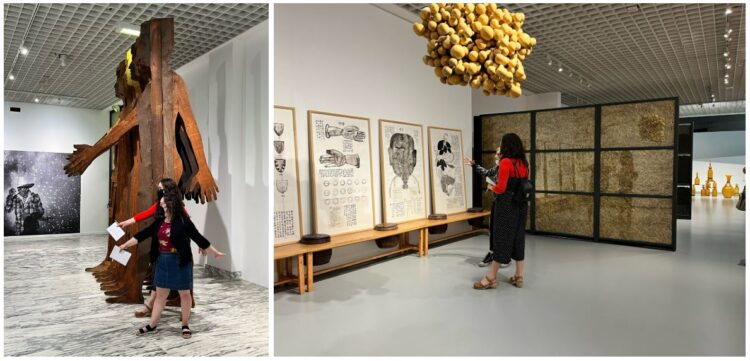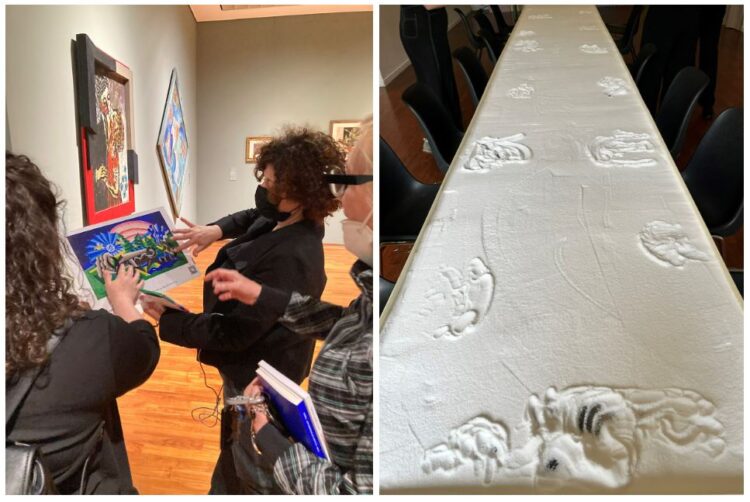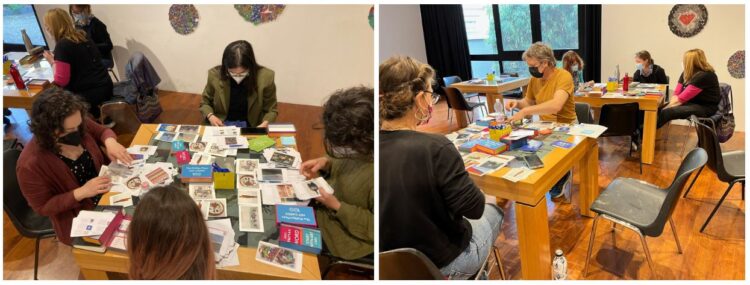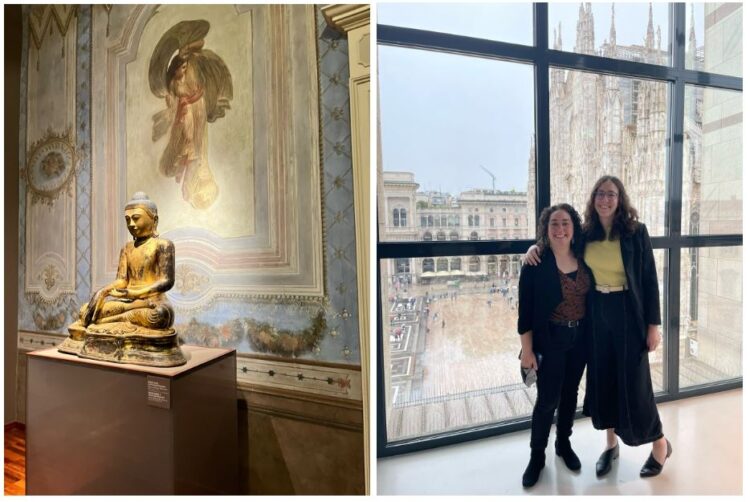In partnership with the US Department of State, The Phillips Collection collaborated with museums across Italy in fostering diversity and inclusion for audience and program development. Hilary Katz, Head of Teaching & Learning, and Emma Dreyfuss, (former) Manager of Community Programs, discuss the workshops conducted on their travels to Italy, May 2-6, 2022.
How can we create a visionary design of a museum—as a place for people to meet and converse? How are we breaking expectations for how people experience museums? We explored these questions throughout collaborative programs during our week in Turin and Milan. We exchanged ideas for how the future of museums and the arts can be imbued with principles of diversity, inclusion, and accessibility.

Phillips museum staff tour GAM Turin
As a result of the Phillips’s virtual diversity and inclusion workshops in 2021, Galleria Civica d’Arte Moderna e Contemporanea di Torino (GAM Turin) organized a multi-sensory meditation workshop with artist Marcos Lutyens. Through guided meditation, we drew with our hands on a table covered in salt and molded clay—all with our eyes closed!

Left: Exploring a textured reproduction of Fortunato Depero Fondo’s L’aratura (1960), which is intended as an accessibility tool for low vision visitors, at GAM Turin; Right: During a trance-like experience led by artist Marcos Lutyens, we meditatively drew in salt with our hands.
Museum Science university students who had attended Lutyens’s meditation workshop returned to explore our identities as local and global citizens of the world. We learned stories of how everyone in the group experiences their identities differently, yet through universal themes of community and global connections. We observed Jacob Lawrence’s Migration Series, Allan deSouza’s The World Series, and Aleksandra Mir’s World Map of Underworlds as a catalyst for conversation about the power of identity and storytelling.

Left: University students write “blackout poetry” in response to Aleksandra Mir‘s World Map of Underworlds (2006); Right: Some of the drawings created by the university students using the same paint markers and paper that Mir uses in her works.
How do we decide what works of art to use for our education programming and resources? How do we ensure that women and artists of color are not overlooked, even though many museum collections consist primarily of white male artists? Using as a jumping off point GAM Turin’s reinstallation of its permanent collection, A Museum without Boundaries, we analyzed what works we gravitate towards and why. We played with the Phillips Art Cards, featuring 54 Phillips Collection artworks, to confront our biases when selecting artwork.

Left: Local Turin museum staff join for this workshop exploring confronting biases in our artwork choices; Right: Artist Marcos Lutyens (orange shirt) joins in on the workshop
The week was an enlightening and invaluable exchange of ideas. We also met with Director Davide Quadrio of Museo di Arte Orientale (MAO) about his visionary plans for renovating and reinstalling their collection; with the Directorate of Culture in the Turin Municipality about their annual art week, Artissima, which shines light on Turin’s art and culture; and with Museo del Novecento (Milan) colleagues about the concept of diversity and inclusion in Italy through the lens of citizenship.

Scenes from our tours of MAO (left) and Museo del Novecento (right)
We can’t wait to see what this international collaboration with Italian arts and cultural organizations brings next!
